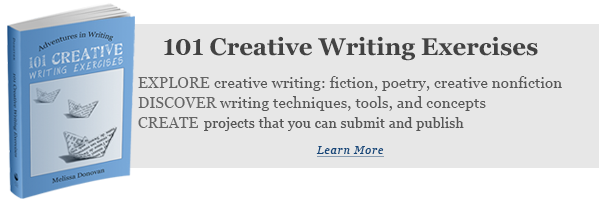101 Creative Writing Exercises is a collection of creative writing exercises that takes writers on a journey through different forms and genres while providing writing techniques, practice, and inspiration.
Each exercise teaches a specific concept, and each chapter focuses on a different subject or form of writing: journaling, storytelling, fiction, poetry, article writing, and more. Every exercise is designed to be practical. In other words, you can use these exercises to launch projects that are destined for publication.
Today, I’d like to share one of my favorite exercises from the book. This is from “Chapter 4: Speak Up,” which focuses on dialogue and scripts. The exercise is called “Body Language.” Enjoy!
Body Language
Sometimes what people say without actually speaking tells us a whole lot more than what comes out of their mouths. Using body language to communicate is natural. We all understand it intuitively—some better than others.
As a writer, you can closely observe people’s body language and learn how humans speak without words so you can bring unspoken communication into your writing.
Imagine two characters, a man and woman, who are complete strangers. They are in a bookstore. Their eyes meet across the room. You wouldn’t write “Their eyes locked. They were instantly attracted to each other.” That would be boring and unimaginative. Instead, you would let the scene unfold and describe it to the reader—how their eyes met, how he gulped and she blushed, how they both suddenly felt warm, how the two of them slowly worked their way toward the center of the store until they finally met in the horror section.
The Exercise
Write a scene between two (or more) characters in which there is no dialogue but the characters are communicating with each other through body language. You can also write a nonfiction piece. Surely you have experienced nonverbal communication. Take that experience and describe it on the page.
Your scene can be a lead-in to two characters meeting or conversing. The scene should comprise at least two pages of non-dialogue interaction with two or more characters. Here are a few scene starters:
- A cop, detective, or private investigator is tailing a suspect through a small town, a big city, a mall, amusement park, or other public area.
- Strangers are always good for body language exercises. Think about where strangers are brought together: public transportation, classes, elevators, and formal meetings.
- Kids in a classroom aren’t supposed to be speaking while a teacher is giving a lecture, but they always find ways to communicate.
Tips: What if one character misinterprets another character’s body language? That could lead to humor or disaster. Maybe the characters are supposed to be doing something else (like in a classroom where they’re supposed to be listening to the teacher) but instead, they’re making faces and gestures at each other. One helpful technique might be to go inside the characters’ heads, but don’t get too carried away with he thought and she wondered as these constructs are basically inner dialogue.
Variations: As an alternative, write a scene in which one character speaks and one doesn’t: an adult and a baby, a human and an animal.
Applications: There are depictions of nonverbal communication in almost all types of storytelling from journalism and biography to memoir and fiction.






Trackbacks/Pingbacks